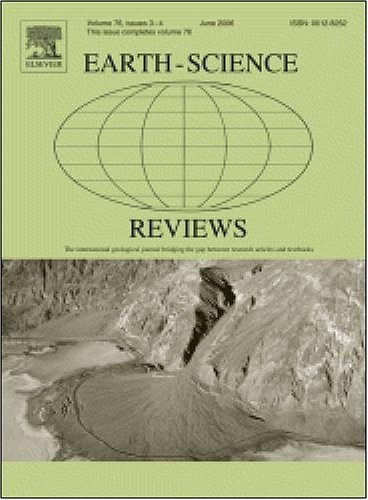Stable zinc isotopes as tracers in environmental geochemistry
IF 10
1区 地球科学
Q1 GEOSCIENCES, MULTIDISCIPLINARY
引用次数: 0
Abstract
Zinc (Zn) is both an essential micronutrient and a common environmental contaminant. Addressing global Zn deficiency and pollution requires effective tools to track its biogeochemical pathways. Zn stable isotopes have become valuable tracers for identifying Zn sources, cycling processes, and anthropogenic impacts across different environmental systems. This review provides a comprehensive survey of Zn isotope signatures (δ66Zn) across natural and anthropogenic sources and systematically evaluates the fractionation mechanisms operative during aqueous complexation, mineral sorption, biological uptake, and anthropogenic activities. It also covers advances in multi-collector inductively coupled plasma mass spectrometry and provides standardized protocols for sample preparation and isotope measurement. Key findings include bimodal δ66Zn distributions in anthropogenic sources. Common sources (δ66Zn = 0.23 ± 0.27‰) are isotopically lighter than natural sources (δ66Zn = 0.46 ± 0.38‰), while smelting residues (δ66Zn = 0.76 ± 0.40‰) and coal fly ash (δ66Zn = 1.14 ± 0.69‰) are significantly heavier. In supergene environments, mass-dependent processes cause δ66Zn variations of about 3‰. Zn isotopes have been applied in source apportionment, soil-plant system Zn translocation, and marine biogeochemical cycling studies. The review concludes that Zn isotopes are robust geochemical tracers for environmental systems, capable of resolving complex source inputs and pathways. To fully realize their potential, future work should focus on improving analytical methods for complex matrices, expanding applications in medical geology, and integrating digital technologies like artificial intelligence.
稳定锌同位素在环境地球化学中的示踪作用
锌是人体必需的微量营养素,也是一种常见的环境污染物。解决全球锌缺乏和污染问题需要有效的工具来跟踪其生物地球化学途径。锌稳定同位素已成为识别不同环境系统中锌来源、循环过程和人为影响的重要示踪剂。本文综述了锌同位素特征(δ66Zn)在自然和人为来源的全面调查,并系统地评价了在水络合、矿物吸附、生物吸收和人为活动过程中的分馏机制。它还涵盖了多收集器电感耦合等离子体质谱的进展,并提供了样品制备和同位素测量的标准化方案。主要发现包括人为源δ66Zn的双峰分布。普通源(δ66Zn = 0.23±0.27‰)同位素轻于自然源(δ66Zn = 0.46±0.38‰),而冶炼渣(δ66Zn = 0.76±0.40‰)和粉煤灰(δ66Zn = 1.14±0.69‰)明显重于自然源(δ66Zn = 0.23±0.27‰)。在表生环境中,质量依赖过程导致δ66Zn变化约3‰。锌同位素在源解析、土壤-植物系统锌转运和海洋生物地球化学循环研究中得到了广泛的应用。该综述得出结论,锌同位素是环境系统中强大的地球化学示踪剂,能够解析复杂的源输入和途径。为了充分发挥其潜力,未来的工作应侧重于改进复杂矩阵的分析方法,扩大在医学地质学中的应用,并整合人工智能等数字技术。
本文章由计算机程序翻译,如有差异,请以英文原文为准。
求助全文
约1分钟内获得全文
求助全文
来源期刊

Earth-Science Reviews
地学-地球科学综合
CiteScore
21.70
自引率
5.80%
发文量
294
审稿时长
15.1 weeks
期刊介绍:
Covering a much wider field than the usual specialist journals, Earth Science Reviews publishes review articles dealing with all aspects of Earth Sciences, and is an important vehicle for allowing readers to see their particular interest related to the Earth Sciences as a whole.
 求助内容:
求助内容: 应助结果提醒方式:
应助结果提醒方式:


